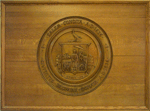Naumkeag Steam Cotton Company: Difference between revisions
No edit summary |
No edit summary |
||
| (One intermediate revision by the same user not shown) | |||
| Line 15: | Line 15: | ||
is now occupied by Shetland Park. Although the company moved their operations south in 1953, it left a significant imprint on the industrial, labor | is now occupied by Shetland Park. Although the company moved their operations south in 1953, it left a significant imprint on the industrial, labor | ||
and demographic history of our city." | and demographic history of our city" ; from the exhibit "Salem Stories" at the Peabody Essex Museum. | ||
For a list of library materials, see the "see also" entry for [[Pequot Mills]] | |||
[[Category:Browse Index]] | [[Category:Browse Index]] | ||
[[Category:Businesses]] | [[Category:Businesses]] | ||
Latest revision as of 13:37, 3 December 2020
In 1839, investors chose the waterfront area known as "Stage Point" for a new mill complex owned by Naumkeag Steam Cotton Company,
whose founders appropriated the original indigenous name of the area now known as Salem.
Construction workers finished the massive brick mill building, popularly known as Pequot Mills, in 1848 and production of fine cotton
textiles began on the steam-powered machinery inside. The company mainly wove and sewed sheeting, which was sold internationally
and shipped as far as East Africa.
As Salem's largest employer, the company attracted Irish, French-Canadian and Polish immigrants to settle in the city. While the mill provided
jobs, it periodically faced labor issues and strikes erupted. In 1914, the Great Salem Fire destroyed the complex. The owners rebuilt and the building
is now occupied by Shetland Park. Although the company moved their operations south in 1953, it left a significant imprint on the industrial, labor
and demographic history of our city" ; from the exhibit "Salem Stories" at the Peabody Essex Museum.
For a list of library materials, see the "see also" entry for Pequot Mills
